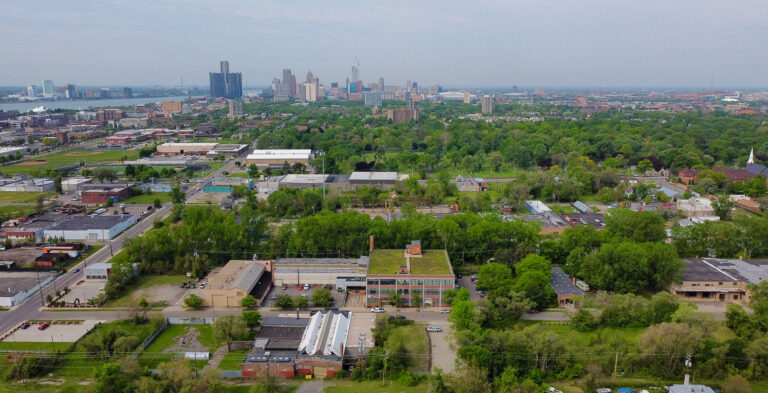
Belt Line Center
At Inhabitect, we helped this owner receive over $1 million in financing and installed Michigan’s first PACE-funded green roof project in Detroit.

Rain gardens are common in many communities, both in public and private spaces. They’re the installations of native shrubs, perennials, and other vegetation planted within depressions in the landscape, usually along a natural slope. A rain garden is designed to allow a large portion of stormwater runoff to soak into the ground rather than rush by, which can cause erosion and other issues downstream.
As the most universally accessible form of Green Stormwater Infrastructure (GSI), a rain garden can be added to nearly any landscape. Adding this technology creates additional pervious surface — especially in urban communities — and is engineered to manage very specific volumes of water. The result: decreased velocity of flow, less flooding, and fewer pollutants getting to municipal infrastructure and your local waterways.
Rain gardens are eco-friendly, support native plants, our and pollinators. If you are a homeowner living near a lake, river or stream, wetland, or other body of waterbody, these landscape features can be a powerful tool to improving water quality and the health of our ecosystem.

Rain gardens are the most accessible and affordable form of green stormwater infrastructure. They can be added to any residential project, creating a whole world of opportunity. We’re proud to give this solution our ‘Green Ribbon’ designation.
Rain gardens provide some of the most accessible ways to manage stormwater. As part of the stormwater treatment train, a rain garden can be installed to dramatically slow the rate and volume of stormwater runoff.
With a reduction in stormwater runoff volume and velocity of flow, there’s less chance of backed up stormwater and combined sewage overflow systems (CSOs). This means drains can operate the way they’re supposed to, avoiding costly floods.


At Inhabitect, we helped this owner receive over $1 million in financing and installed Michigan’s first PACE-funded green roof project in Detroit.

Inhabitect is a full-service firm dedicated to designing, building, and growing all forms of living architecture. Based in Traverse City, Michigan — and consulting throughout North America — we create green roofs, natural shorelines, and other stormwater management and eco-minded landscape solutions for clients across the state. We’re bringing a new meaning to ‘GREEN.’